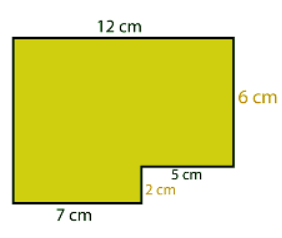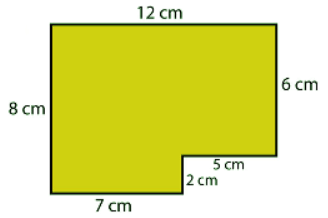Perimeter on a grid | Year 4 Mathematics PDF Download
Understanding Perimeter on a Grid
In the realm of geometry, the perimeter refers to the total distance around a two-dimensional shape. This can be determined by summing up the lengths of all its sides.
Example
Example: Rectangular Shape
Let's delve into a scenario where a rectangle is depicted on a square grid, with each square equivalent to 1 cm.
To determine the rectangle's perimeter, add the lengths of all sides.
Using the squares, you can ascertain the length of each side:
- The length measures 4 squares or 4 cm.
- The width of the rectangle measures 7 squares or 7 cm.

Sum up all the sides: 7 cm + 7 cm + 4 cm + 4 cm = 22 cm.
An alternative method involves counting the squares around the shape's perimeter.
Perimeter of Rectilinear Shapes
How do you find the perimeter of a rectilinear shape?
A rectilinear shape has straight sides that intersect at right angles.
You can calculate its perimeter just like any other shape, but with more sides to sum up. Use the squares to help determine its perimeter, with each square representing 1 cm.
Use the squares to help determine its perimeter, with each square representing 1 cm. After finding the lengths of each side, add them up:
After finding the lengths of each side, add them up:
6 cm + 3 cm + 5 cm + 1 cm + 1 cm + 2 cm
That’s a lot of numbers! To simplify, you can group some numbers together: 6 cm + 3 cm + 5 cm + 1 cm + 1 cm + 2 cm or 9 cm + 6 cm + 3 cm = 18 cm
6 cm + 3 cm + 5 cm + 1 cm + 1 cm + 2 cm or 9 cm + 6 cm + 3 cm = 18 cm
So, the perimeter of the rectilinear shape is 18 cm.
Example
Example: Work out the missing lengths of this shape to find the perimeter.
Sol:
- Let's start by identifying the missing horizontal length.

- To match the longest length of 12 cm, add the missing length to 7 cm: 7 cm + ? = 12 cm. Therefore, the missing length is 5 cm.

- Next, let's determine the vertical sides. The longest length is missing, so add 6 cm and 2 cm together: 6 cm + 2 cm = 8 cm.

- Now that you know the measurement of each side, you can calculate the perimeter: 12 cm + 6 cm + 5 cm + 2 cm + 7 cm + 8 cm = 40 cm.
|
69 videos|70 docs|11 tests
|
FAQs on Perimeter on a grid - Year 4 Mathematics
| 1. What is the formula for calculating the perimeter of a shape on a grid? |  |
| 2. How do you find the perimeter of a shape on a grid if some sides are missing? |  |
| 3. Can the perimeter of a shape on a grid be negative? |  |
| 4. How is the concept of perimeter on a grid useful in real-life situations? |  |
| 5. Are there any shortcuts or tricks for quickly calculating the perimeter of a shape on a grid? |  |

|
Explore Courses for Year 4 exam
|

|



















